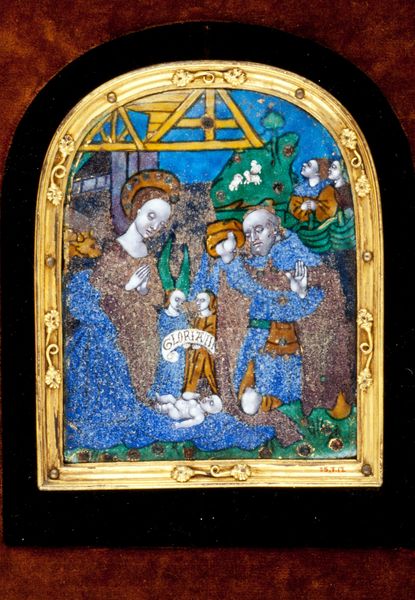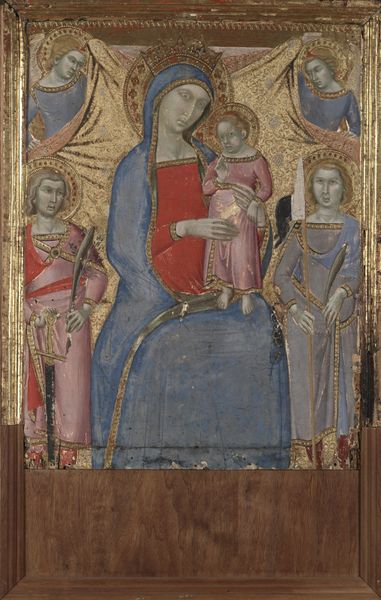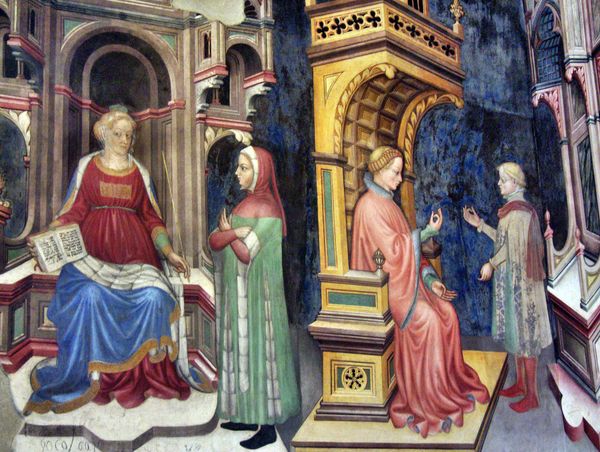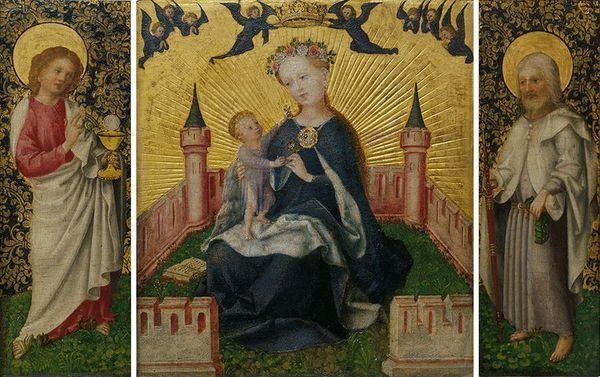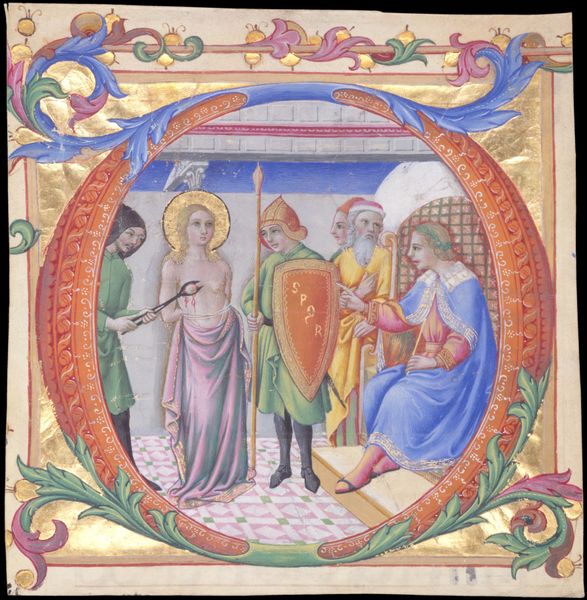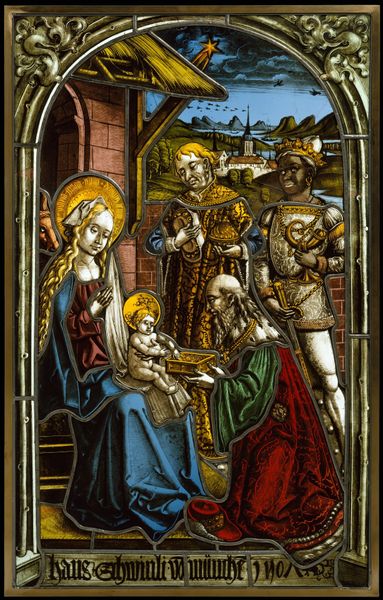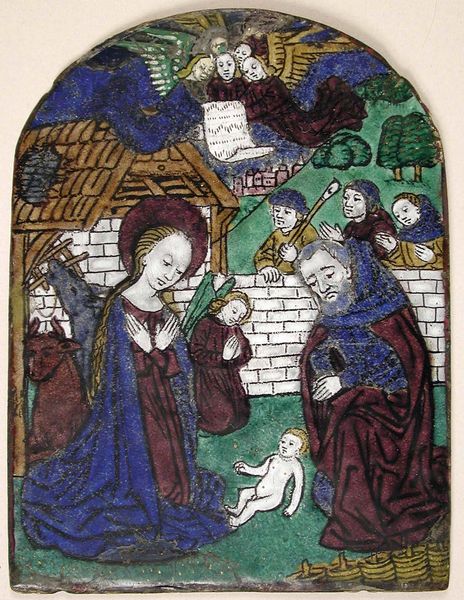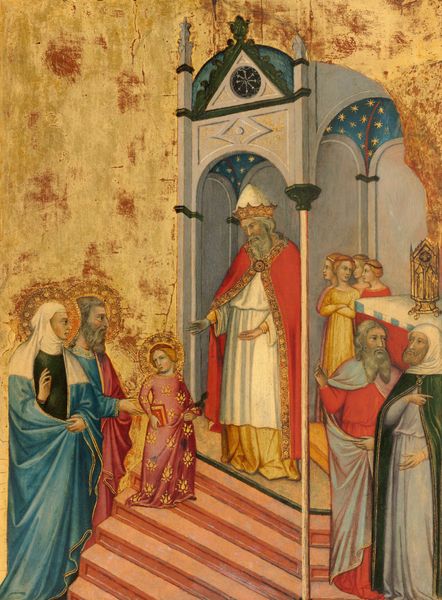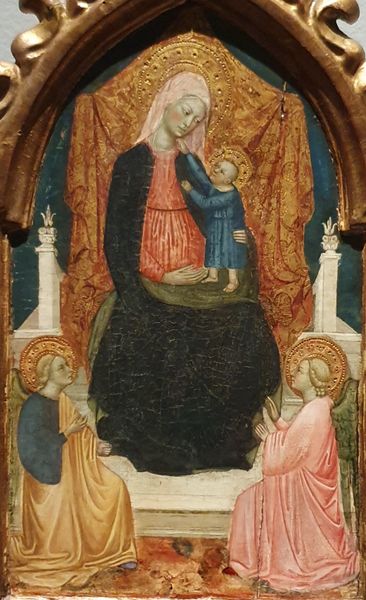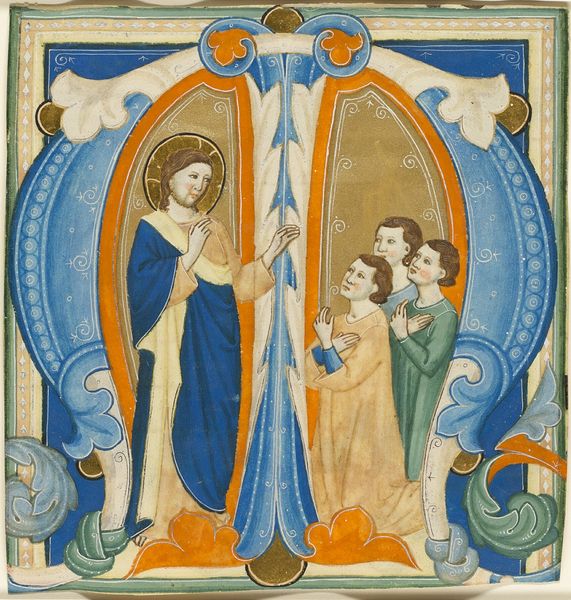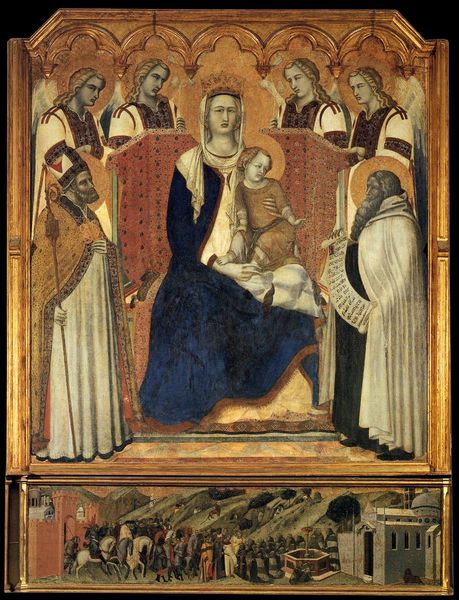
tempera, enamel
#
medieval
#
tempera
#
stain glass
#
figuration
#
traditional architecture
#
framed image
#
enamel
#
naive art
#
france
#
history-painting
#
italian-renaissance
#
miniature
Dimensions: 5 1/8 x 3 7/8 in. (13.02 x 9.84 cm) (outer frame)
Copyright: Public Domain
Curator: This small, intricate panel depicts the Coronation of the Virgin, dating from the 16th century and attributed to Nardon Penicaud. It’s currently housed here at the Minneapolis Institute of Art. Editor: It has a kind of otherworldly gleam to it, almost jewel-like. The colours, especially the blues and golds, are so intense despite its small size. It must be quite something to see it in person. Curator: Absolutely. This work showcases the mastery of enamel painting during that period in France. Think about the craftsmanship involved: the layers of enamel, the controlled firing, all contributing to its luminous effect. It's not just pigment; it's fused glass, an incredible transformation of raw materials. Editor: You know, seeing the Virgin being crowned always brings up questions of power and submission. Considering its historical moment, who exactly was commissioning art of this nature? What intersectional tensions were being expressed or, more likely, suppressed by these devotional pieces? Curator: That's precisely the kind of questioning we need. Royal patronage was obviously influential. Religious images weren't merely devotional objects; they served a very clear purpose in affirming and perpetuating a stratified social order. Mary becomes a vessel through whom social codes were being reified, in her femininity, motherhood, but also power. Editor: And notice the material wealth suggested. Beyond the raw skill and labour involved in producing enamel, it points to conspicuous consumption and access only available to a very privileged few. It becomes a document of both artistic ingenuity and stark economic disparity. The means of its production, after all, are deeply embedded within its visual narrative. Curator: I find it fascinating to contemplate the artist's position, too, nestled in the complicated context of artistic production within his own historical and political location. Did Penicaud, in crafting this piece, think about it as something beyond the sacred? Editor: I'm left pondering its resonance beyond the overtly religious symbolism. The artist manipulates materials, labor, and a religious subject. But more broadly it brings into sharp relief so much that existed behind its creation in its time. Curator: Yes, this opens up such rich ways of thinking about devotion, class, and craft! Editor: Absolutely, a small artwork prompting larger questions about making and meaning.
Comments
No comments
Be the first to comment and join the conversation on the ultimate creative platform.
